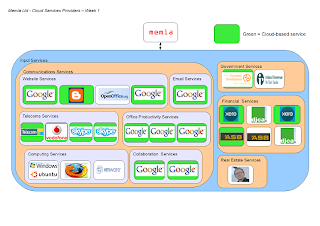In particular, the following recent posts are especially worth reading:
Update: the Cloud Computing Bill of Rights
The Principles of Cloud Oriented Architecture
Generally I agree with James that, since the world is now coasting towards a single common, shared Cloud Oriented Architecture that a set of common principles, rights and responsibilities can and should be drafted (but I would ask by whom?). As with any technological advance, the social and legal effects cannot be thought through soon enough before the impact of the change is felt. The question of jurisdiction will always be hardest - which authorities govern and legislate for data and other services in the (international and potentially off-planet) Cloud? Technology moves ever more quickly than the human population can keep up.
In some ways this "Bill of Rights" reminds me of a political manifesto - there will be diametrically opposing views on privacy and security for example from the governments of many countries, and so the practical question is *how* such a BoR would ever come to realised.
However, another way to look at the BoR is as a requirements spec trying to solve 3 discrete technical problems:
Namely:
- Providing clear ownership of data and avoiding Cloud services providers ever "owning" their customers' data.
- Providing clear accountability (=measurable!) for Cloud service levels
- Providing clear ownership of (patented?) intellectual property underlying a Cloud service

